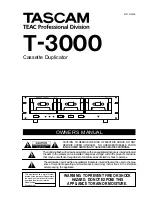
Logicube EchoPlus-
NG User’s Manual
11
3: Quick Start
3.0 Quick Start Guide – Introduction
This chapter gives a basic overview and steps on how to perform different operations using the
EchoPlus-NG (Clone, Hash, Wipe, etc.). Complete details on each operation, menu, or selection,
and the different screens can be found in
Chapter 4: Clone
and
Chapter 5: Types of Operation
.
It is highly recommended to change the passwords for built-in accounts. Instructions
on how to change the passwords to the two built-in accounts can be found in
Chapter 6
.
3.1 Clone
The EchoPlus-NG has three modes of operation to clone virtually any drive
(Hard Disk Drives or Solid State Drives). Drives can be cloned using
Mirror
(bit-
for-bit copy) or
Clever
(copies only data areas, skips blank sectors, and
partitions can be resized to fit larger capacity drives).
Drive to Drive –
Clones a drive to one or more Target drives.
The next two modes are part of the Multi-Image Master option and are
greyed out (un-selectable) unless the option is purchased and activated.
The Multi-Image Master is an option that allows
Drive to Image
and
Image to Drive
modes to function, allowing the EchoPlus-NG to create
image files from Master drives and restore these images to other drives.
To purchase this option, contact the Logicube Sales Department at
.
Image to Drive –
Restores an image created by the EchoPlus-NG to a Target drive.
Drive to Image –
Creates a Logicube EchoPlus-NG image file to a target drive or
repository. This image file can be restored to drives using the Image to Drive mode.
The EchoPlus-NG cloning, hash, and wipe speeds are determined by
several factors including the following:
- The manufacturer specifications of the drive(s) being used
- The age of the drive (manufactured date)
- How often that drive has been used
For example, a 2 TB drive with 64MB of cache produced by the
manufacturer 2 years ago is most likely slower than a 2 TB drive that the
same manufacturer just released this year, even though they are both
7200RPM with 64MB of cache, and are both SATA III.

































